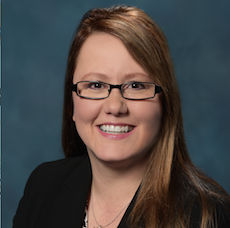
Virginia multi-site operator English Meadows Senior Living made headlines earlier this month when it announced a new benefit for long-term employees: free care at their places of employment after retirement. The company made the move to help its staff members and itself in an industry in which staffing challenges are expected to increase as the population ages and the need for senior living increases.
Even if your company isn’t in the position to offer such a generous perk, a new study reveals a few places you might look to appeal to potential workers.
Content marketing company Fractl asked 2,000 people to rank a list of 17 benefits as to how important the benefits would be if the individuals were deciding between a high-paying job and a lower-paying job with more benefits. Respondents ranged in age from 18 to 81.
Improved health, dental and vision insurance was the factor most likely to tip the scales toward the lower-paying job, the researchers found. Insurance was the only benefit that more respondents (54%) said they would give “heavy consideration” to rather than “some consideration” (34%).
Other popular benefits among respondents included more flexible hours, more vacation time and work-from-home options, each receiving some or heavy consideration from well over 75% of respondents. Employees seek such benefits to try to maintain a balance between their work and home lives, Fractl said.
“Our survey findings suggest that providing the right mix of benefits that are both inexpensive and highly sought after among job seekers can give a competitive edge to businesses that can’t afford high salaries and pricier job perks,” Kerry Jones, inbound marketing manager at Fractl, wrote in a Harvard Busness Review article about the research.
It might be difficult for senior living operators to offer more flexible hours or work-from-home options to all of their employees, but the 19th annual “Assisted Living Salary & Benefits Report” released in January by Hospital & Healthcare Compensation Service suggests that the industry may have some room to grow when it comes to insurance and time off options.
More than 99% of operators responding to the survey said they offer health insurance to employees, sharing costs with them. Most also said they offer dental and vision insurance, although employees bear the cost of those policies in most cases. The findings suggest that employers looking to attract job candidates through benefits may have an opportunity to contribute more money toward the cost of health, dental and vision insurance policies. The Fractl research would suggest that operators could offer better coverage through their plans, too.
When it comes to time off, all providers responding to the Hospital & Healthcare Compensation Service survey said they offer either vacation time or paid time off, the latter of which combines holidays, sick days, personal days, excused paid absences and vacation days. Nationally, the average number of PTO days ranged from 15.8 for clinicians with one year of service to 28.3 days for managers with 20 years of service. Twenty-one percent of participating senior living employers said they make this benefit available to employees immediately upon the start of employment, and 68% make this benefit available to employees after 90 days of service. The answers suggest opportunities for providers to offer more time off or to make employees eligible for time off after fewer days of service.
Ten percent of survey respondents said they do not offer additional pay for those who worked on holidays, another chance for providers to make a change to attract workers.
Lois A. Bowers is senior editor of McKnight’s Senior Living. Contact her at [email protected]. Follow her on Twitter at @Lois_Bowers.



